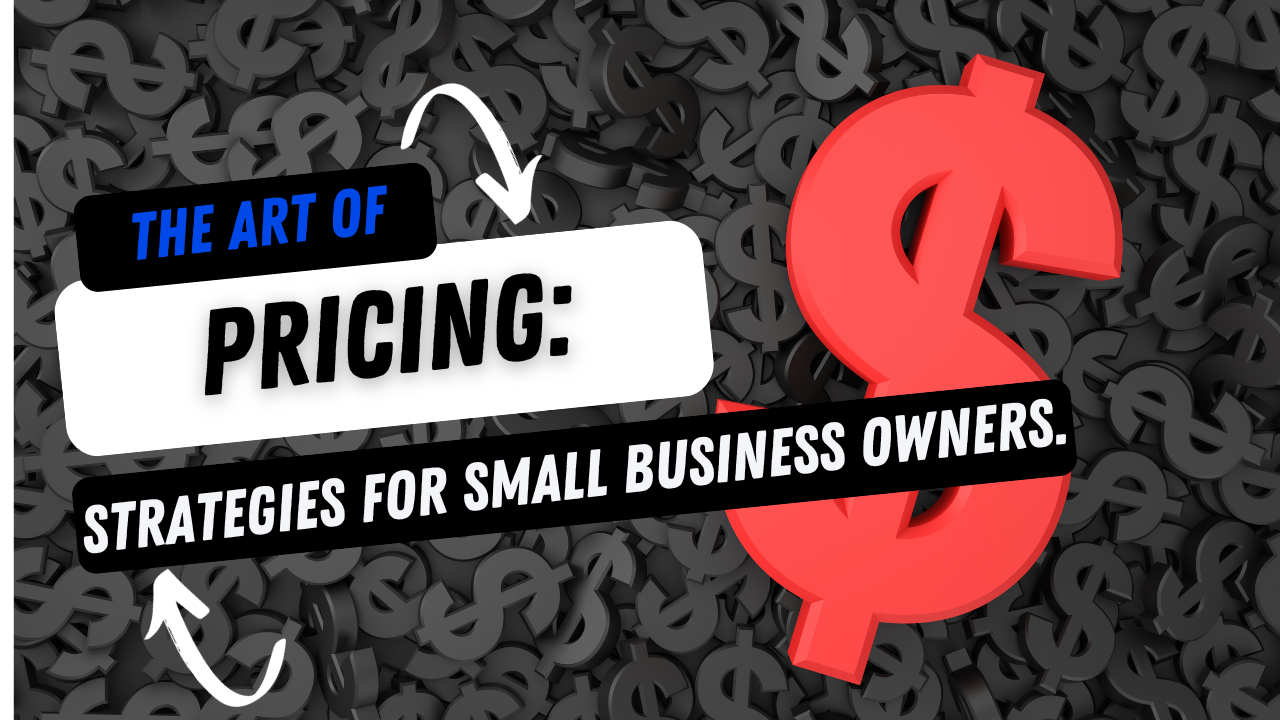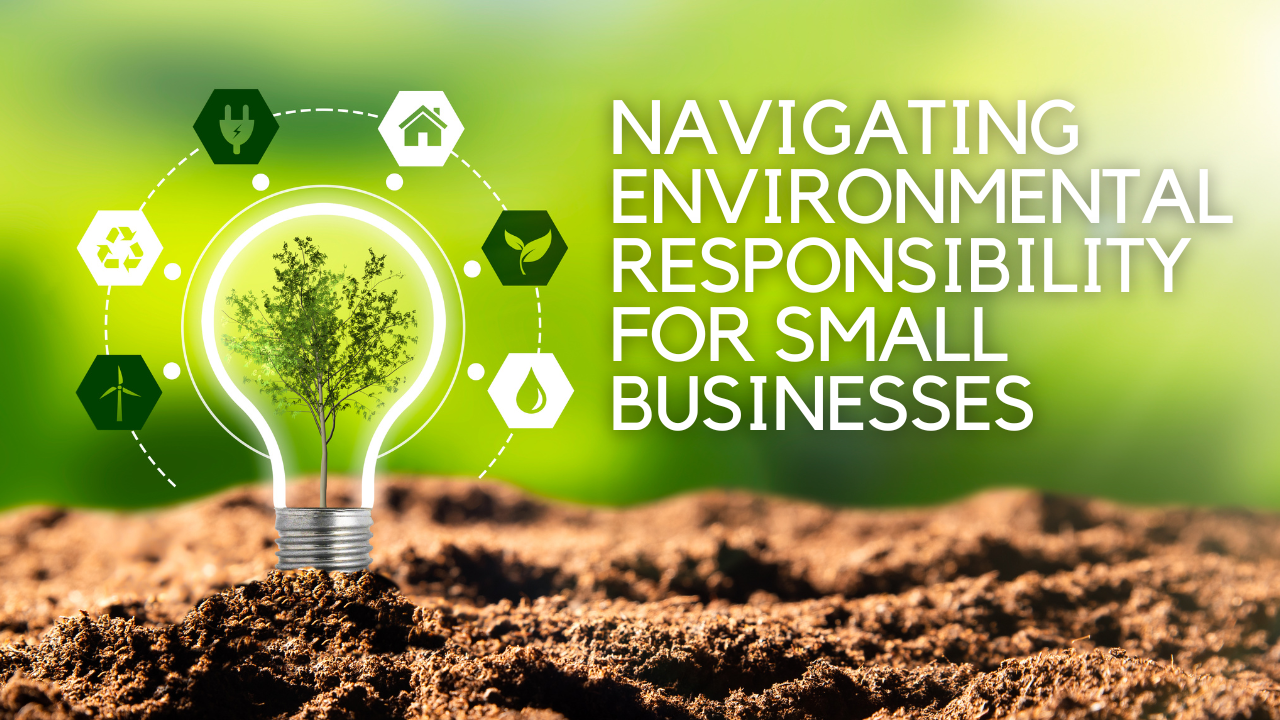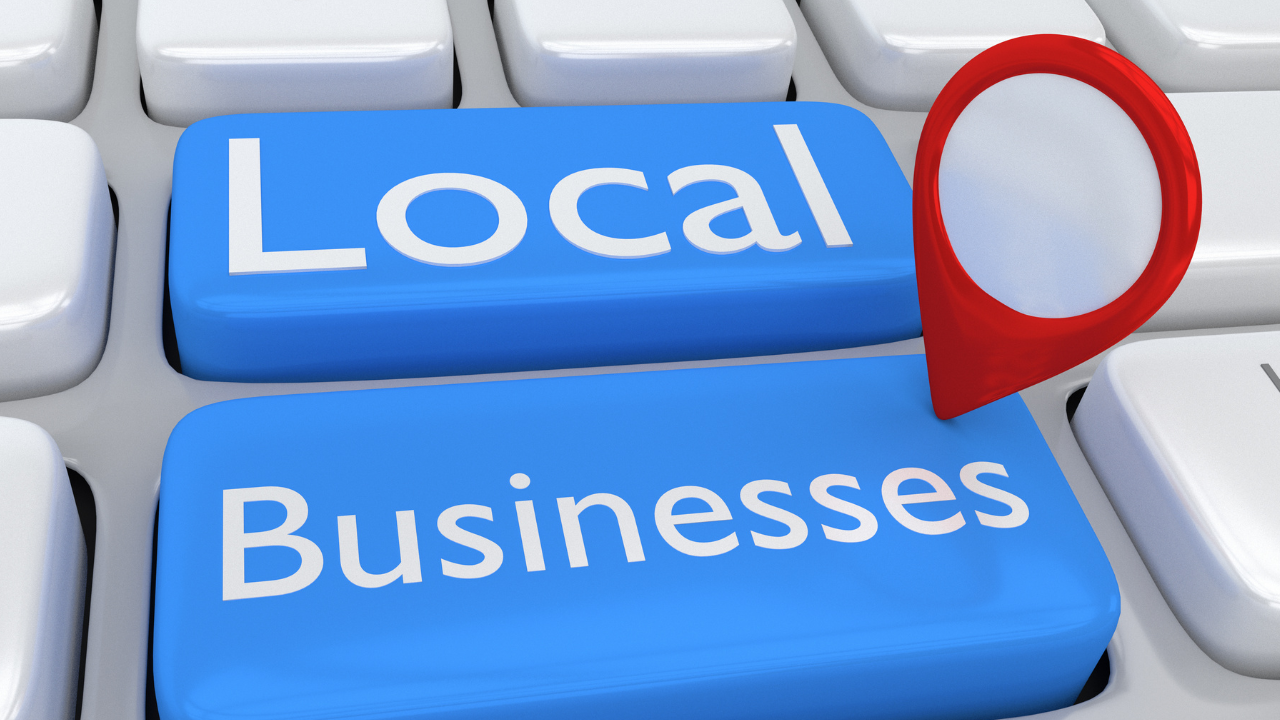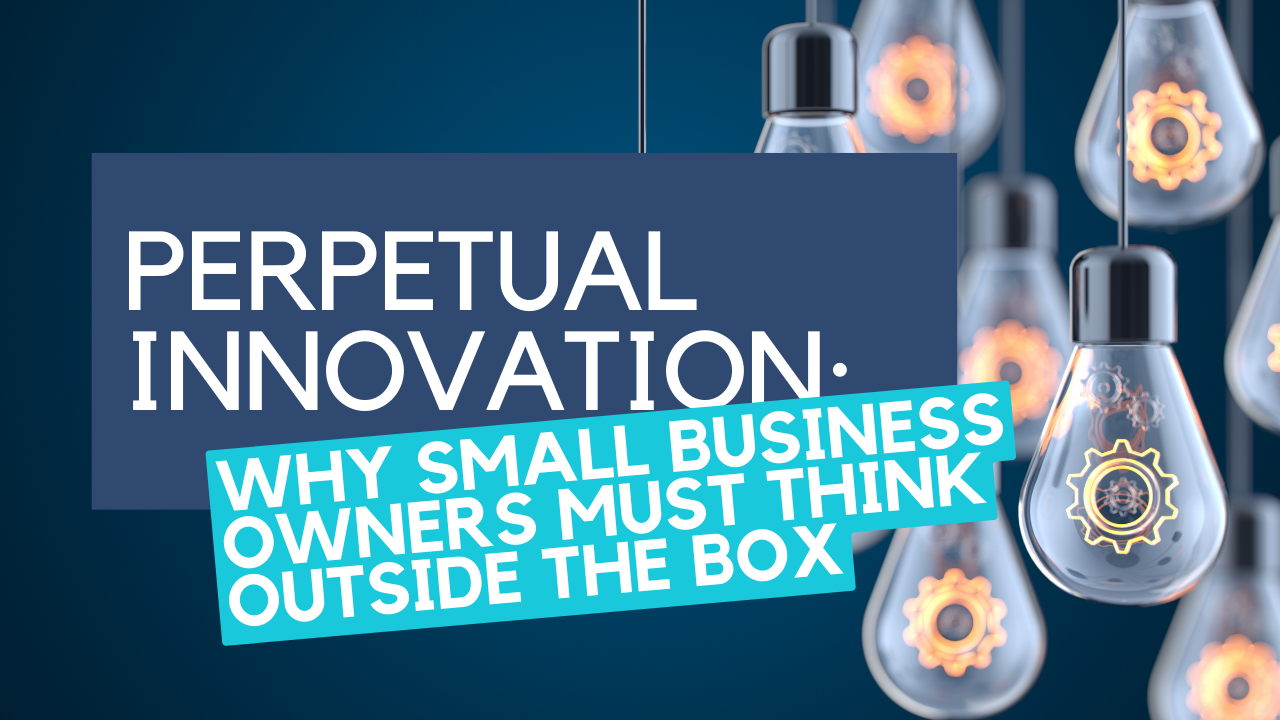The Art of Pricing: Strategies for Small Business Owners

Figuring out the right prices can be a real headache for small businesses. Charge too much, and you'll scare away your customers. Charge too little, and you'll end up eating more instant noodles than a college dorm room during finals week. It's a make-or-break decision that can impact your profitability. To help you out, we've put together this blog post to help small business owners get a better handle on pricing strategies. Give it a read and see how it can benefit your bottom line.
Understanding Your Costs:
Before diving into pricing strategies, it's essential to understand your costs. Calculate the cost of goods sold (COGS) and consider overhead expenses. This includes production costs, labor, rent, utilities, and more. Knowing your costs provides a baseline for pricing that ensures you cover expenses.
Market Research:
Conduct thorough market research to understand your competitors and target audience. What are similar businesses charging for similar products or services? Wh...
Life is Like Underwear, Change is Good.

Let's face it: life can be a lot like underwear – it gets a bit uncomfortable when it stays the same for too long. And just like the undergarments we hope you swap out on a regular basis, change is not only good; it's essential, especially when it comes to your business.
Whether it's a shift in market trends, new technology, economic fluctuations, or unforeseen challenges like the COVID-19 pandemic, small business owners must be prepared to adapt and evolve to thrive in an ever-changing landscape.
Navigating change as a small business owner can be challenging, but with the right strategies, it can also be an opportunity for growth and innovation. Below are some key strategies for successfully navigating change as a small business owner.
1. Embrace a Growth Mindset
If you want to handle change like a boss, the first thing you need to do is adopt a growth mindset. Understand that change is a totally normal part of business and can actually be a great opportunity to learn and imp...
The Rule of Thirds: A Blueprint for Success

Photographers and artists often use something called the Rule of Thirds in their work. They break the image into three sections (vertically and horizontally), and this compositional guideline serves almost like a cheat sheet to guarantee balanced and visually appealing images.
This same principle can also be applied to the world of business. But rather than framing a perfect shot, it's a strategic approach to achieving balance and success in your entrepreneurial journey. From marketing to decision-making, following the rule of thirds can serve as your own blueprint.
Product Development
One of the primary applications of the Rule of Thirds in business is in product development. Here's how it works:
- Customer Needs (1/3): Allocate one-third of your product development efforts to understanding your customers' needs and preferences. Invest in market research, conduct surveys, and gather feedback to ensure your product addresses a genuine demand.
- Innovation (1/3): Allocate anot...
The Four Types of Entrepreneurship: Finding Your Path to Success

Entrepreneurship is a multifaceted world, with diverse opportunities and avenues for those with the vision, drive, creativity, and determination to bring their ideas to life. It’s commonly broken down into four categories: small business, scalable startup, large corporation, and social enterprise. Each type of entrepreneurship offers its own rewards, opportunities, and of course - challenges.
So, how do you know which one is the right one for you? Let's dive deeper into each of these types of entrepreneurship to help you figure out which one might be the best fit for your unique skill set and goals.
Small Businesses
Unless you’re new here, you already know how we feel about small businesses. (We like ‘em. A lot.) They’re an integral part of our economy, often characterized by their local or niche focus and a commitment to serving the needs of their immediate community. Small business owners typically have more control over their operations and a strong connection with their c...
Customer Acquisition: A Guide for Small Business Owners

As business owners, we’re well aware that getting more customers through our doors or clicking on our website is our lifeblood. Without it, the whole thing falls apart.
However, it's not just about increasing numbers.
It’s about making sure you have a diverse customer base, avoiding the pitfalls that come with over-reliance on a handful of clients, and approaching customer acquisition strategically,
Failure to overlook this can lead to stagnation and missed opportunities for growth, and relying solely on your existing customer base can create a comfort zone that hinders innovation and adaptation to changing market dynamics. As markets evolve, your offerings may become obsolete, and without a steady influx of new customers, your business could struggle to stay afloat.
First things first: Why you should diversify your customer base.
Your product or service will probably not be for everybody, and that’s OK. But make sure you’re not painting yourself into too small of a corner whe...
Navigating Environmental Responsibility for Small Businesses

In today's world, the push for sustainability and environmental consciousness is more than just a trend; it's a responsibility. Not to mention that more and more customers are placing a higher value on eco-friendly practices.
As a small business owner, you can positively impact the environment and attract customers who value eco-friendly practices…all while enhancing your brand’s reputation and bottom line. (We are business people, after all, and “going green” doesn’t mean going broke.)
This post will explore a few practical steps to reduce your business's environmental footprint. Find one or two that seem doable and start there. Even the smallest of changes can have a significant impact down the road.
Evaluate Your Energy Efficiency
Energy consumption is a significant contributor to carbon emissions. Consider these steps to improve energy efficiency:
- Switch to LED Lighting: Replace traditional bulbs with energy-efficient LED lights. They last longer and use less elect...
8 Characteristics of High-Performing Teams

Have you ever marveled at how certain teams just seem to have a magic touch? Time and time again, they rise to the occasion, taking on challenges, overcoming the odds, and crushing goals.
How?
Is it strategic hiring? Professional development opportunities? Really good coffee in the breakroom?
Maybe a little bit of everything?
First things first, let's get our definitions straight. A high-performing team isn't just a group of talented individuals; it's a dynamic collective that goes above and beyond to reach peak performance levels. These teams harmoniously blend diverse skills, collaborate seamlessly, and produce outstanding results consistently.
In other words, they have their shit together.
Want that sort of teamwork for yourself? Here are eight characteristics that separate high-performing teams from everyone else.
They have a clear purpose and defined goals:
High-performing teams share a crystal-clear understanding of their purpose and objectives. Whether it's launc...
10 Strategies for Diversifying Income Streams for Your Small Business.

For small business owners and aspiring entrepreneurs, diversifying income streams is a key strategy to enhance stability and open up growth opportunities. You can be a Budgeting Boss or a P&L Pro, but if you don't have enough money coming IN, the rest of it really doesn't matter. That's why it's dangerous to put all your eggs in one basket. Having just one product or service can leave you vulnerable to changes in the market and industry disruptions. (Remember COVID?)
In this post, we're going to explore ten effective income stream diversification strategies that can provide your small business with increased financial security (and a bit more breathing room for you). They may not all be applicable to what you do, but even incorporating one or two can make the world of difference between omelets for breakfast…or egg on your face.
E-commerce and Online Sales
With everything going digital these days, establishing an e-commerce platform can significantly broaden your customer base an...
Hyperlocal Marketing: How to Drive Local Customers to Your Small Business

In the digital transformation era, small business owners have a significant advantage when attracting local customers. Local SEO (Search Engine Optimization) and hyperlocal marketing are essential strategies to ensure your small business stands out from the competition and gets noticed by people nearby. In this post, we're exploring some tips and tricks to optimize your small business website and digital presence so you can boost your sales and get more foot traffic.
Google My Business (GMB) Optimization
To attract more local customers, one of the most crucial steps is setting up and optimizing your Google My Business (GMB) profile. Claim your business listing and make sure all the info is accurate and up-to-date. This includes your address, phone number, operating hours, and a brief blurb about what your biz is all about. Remember to upload high-quality pics of your place and products to make a strong first impression on potential customers. (A picture is worth a thousand words, ...
Perpetual Innovation: Why Small Business Owners Must Think Outside the Box

If you're a small business owner, you know how important it is to stay ahead of the game. Thinking outside the box isn’t a one-and-done move, and you can't just rely on what's worked in the past or stick to the same old ideas. You've gotta keep evolving and finding new ways to stand out from the competition. Perpetual innovation, friends. If you’re not changing…you’re falling behind.
Today, we’re going to take a look at the importance of continuous innovation for small business owners and provide practical steps you can take to ensure you stay ahead of the competition.
The Dangers of Complacency
Not to be overly dramatic, but complacency is a silent assassin that gradually erodes a business's competitive edge. Complacent = stagnant = failure to adapt to the evolving needs and preferences of customers and missing out on some serious growth opportunities. A lack of innovation leaves you vulnerable to emerging competitors who are eager to disrupt the market with fresh ideas and ...



